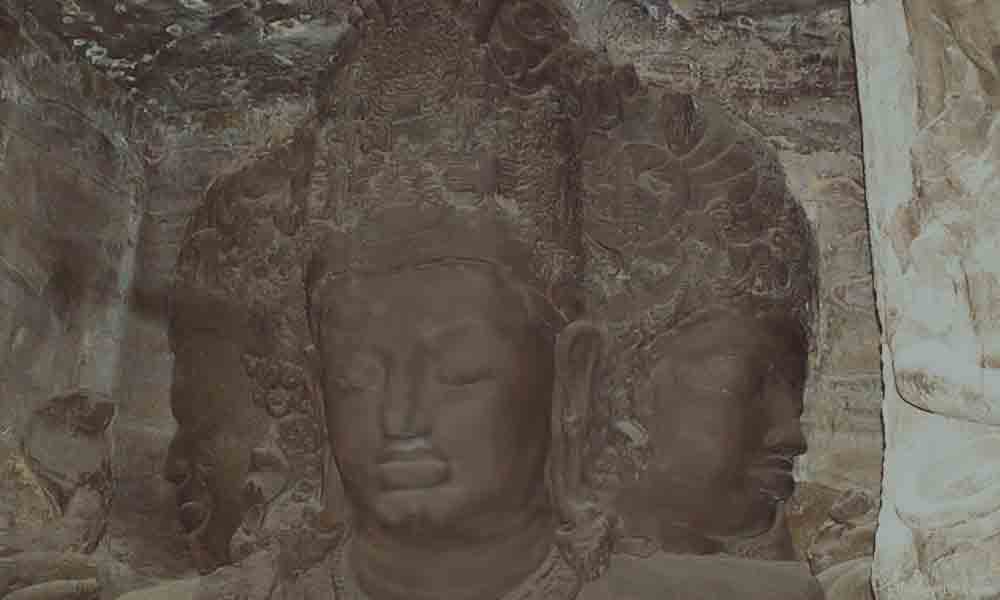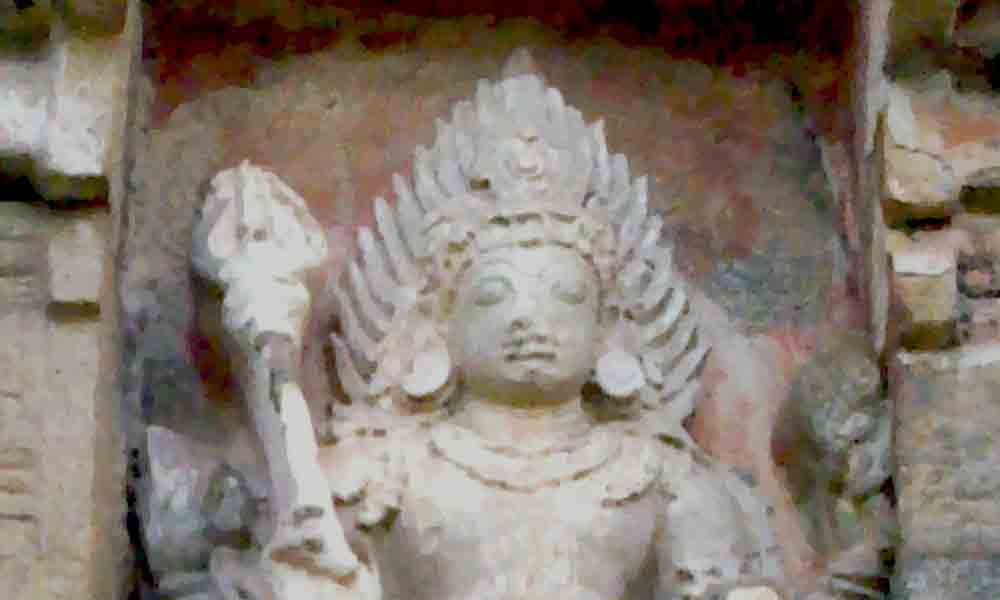
Aspects of Lord Shiva

The subject regarding the aspects of Shiva (Siva) can be approached from many perspectives. Here I have presented Shiva as the Supreme Brahman Himself, a claim validated by the Vedas themselves in numerous verses such as the ones found in the Svetasvatara Upanishad. Thus in presenting Shiva as the Cosmic Being, I have not broken any tradition. However, I have taken some liberties in associating his popular names to the well known aspects and manifestations of Brahman based upon their meaning and significance.
I have avoided any reference to the Panchanana aspect of Lord Shiva as well as his peaceful and terrific aspects. You may find reference to them in my other writings available at this website. Followers of Lord Vishnu may argue that the same aspects can be attributed to Him also. It is true. The Truth is one, but you can give That any number of names and forms. We can ascribe the roles and functions of Brahman to any of the Trinity Gods equally. The question or the dispute as to who is the supreme Brahman is a very ancient one. It is well illustrated in one of the stories found in the Puranas in which both Lord Brahma and Lord Vishnu try in vain to find the beginning and end of Shiva and acknowledge Him as the highest Brahman. - Jayaram V
In Saiva tradition, Lord Shiva is considered the highest, supreme Brahman Himself. As Brahman, Shiva has four aspects, corresponding to the four states and four main functions he represents. They are
- The Unmanifested aspect - Nirguna Brahman
- Manifested aspect - Saguna Brahman
- Material aspect - Viraj
- Individual aspects - Amsas or Emanations
Maheswara or Mahadeva
As in case of Brahman, the unmanifested aspect of Shiva is beyond our knowledge. In this aspect, he is the transcendental reality, the highest and the most unknown, or the Non-Being, in whom Nature (Prakriti) is either absent or latent and undifferentiated. Hence he is devoid of qualities and distinguishing features. In this aspect he is the eternal mysterious Self, pure consciousness and bliss, whom Uma Haimavathi declared in the Kena Upanishad as the "Spirit Supreme", by knowing whom Indra excelled all other gods and became the ruler of the heavens. Yet, even the gods have little knowledge of him. Like the dark matter of the universe, or deep sleep, He remain a mystery beyond our minds and senses. For our understanding, we may name this aspect of him as Paramesvara, Mahesvara (the Supreme Lord). He is Brahman Himself, the Supreme Self, the Eternal Truth, the Absolute Principle, who is without a beginning and without an end, indivisible, beyond the senses and mind, without a form and without division, the end of all devotional and spiritual practice, by knowing whom everything is known and realized.
Isvara or Parama Shiva
As the Vedas declare, at the beginning of creation, due to some mysterious reason, a part of the Unmanifested Brahman becomes manifested as a reflection in the quality of Sattva. This aspect is known variously as Brahman with qualities (saguna Brahman), Lord of the Universe (Isvara), Cosmic Person or Being (Purusha). We may name this aspect of him as Parama Shiva, Maha Shiva or Mahadeva, the God of gods and the Lord of the manifest universe. As the awakened Supreme Brahman, he is the Cosmic Lord, the active Being, who combines within himself the roles of creation, preservation and destruction and projects out of himself all that we know as material universe. He is the Cosmic Being, who performs a sacrifice upon Himself to manifest the beings and the worlds. Creation is but his conscious dream, a set of vibrations arising from his cosmic dance, which makes possible all that we experience and enjoy in our phenomenal existence. He is the Purusha of the Vedas, the Cosmic Male, who awakens primordial Nature, Prakriti or the Cosmic Female, and establishes himself in it to manifest life and diversity.
Viraj, Rudra or Shiva
 Rudra Shiva, Gangaikonda Cholapuram
Rudra Shiva, Gangaikonda Cholapuram
At the next lower level he is Shiva, popularly known as the destroyer, representing an aspect of the Trinity. In truth, He is all, representing the triple functions of creation, but tradition specifically recognizes him as Shiva, the destroyer. This is his most visible and physical aspect, in which He and Nature are not only inseparable but indistinguishable in both form and function. Hence, he is also known as Ardhanarisvara (half male and half female). He is the Cosmic Body or the world itself (Viraj) representing our wakeful consciousness and the sensory world. While we identify his creative aspect as Brahma and his preservative aspect as Vishnu, he especially known particularly as Shiva the destroyer. He is the lord with a thousand names, known variously as Hara, Shankara, Kailasapati, Parvathinatha Umapathi etc., and venerated by liberated beings and eternal souls (siddhas) of the heaven, and his retinue of innumerable ganas, deities, yogis, and devotees. In this role Shiva facilitates the spiritual progress of humanity as World Teacher (Dakshinamurthy). He destroys old order of things to facilitate renewal and regeneration of the manifest universe. He destroys the impurities of the mind and body to facilitate our spiritual evolution. He transforms the demonic nature hidden in creation to facilitate order and regularity and the liberation of beings. As Time, he is also the lord of Death who is responsible for the impermanence and instability of the phenomenal universe. Finally at the end of current creative cycle, he destroys the worlds to prepare the ground for yet another cosmic renewal. In this role he is also responsible for the flow of divine consciousness into our earth consciousness and our transformation into spiritual beings.
Amsas or Emanations
Creation is an extension of the Supreme Brahman. Everything that we see and experience in the manifest world is Brahman only because there is nothing other than Him or without Him. So technically the whole diversity is an aspect of Brahman only, but in them Brahman remains concealed or hidden behind phenomena. However, occasionally he reveals himself partly or significantly, to perform particular functions for the order and regularity of creation or the welfare of the worlds. We consider such appearances as his emanations or partial manifestations (amsava). In Vaishnava tradition they are called incarnations, whereas in Saiva tradition they are known only as emanations or minor aspects of Shiva, because Saiva do not recognize the need for the incarnation of God. Some of the famous emanations of Shiva are Hanuman, Dakshinamurthy, Tandavamurthy, Bhairava, Virabhadra, Chandakesvara, Mahakalisvar, Ardhanariswara, Bhikshtanamurthy, Tandavamurthy are some of his well known minor aspects or incarnations.
In popular Hinduism, Shiva has a limited role in creation and identified in a particular aspect, but in Saiva tradition Shiva is Brahman Himself. He is everything, the known and the knower, the support and the support, the creator and the creation, the Being and the Non-Being, existence and non-existence. While we may give different names to distinguish the functional aspects of Brahman, in truth, they are but His numerous forms. Therefore, it is important to know that Lord Shiva is not a mere idol or a Shivalinga worshipped by people in temples and sacred places for superstitious reasons. He is Brahman Himself, the Unmanifested Being, who descends into lower planes of existence to project an alternate reality which we experience as the phenomenal world. It is only by transcending our delusion and looking beyond the physical reality he projects, which is possible only through austerities and the grace Shiva, we will be able to reach the Highest Truth, Shiva, hidden within ourselves beneath the layers of phenomena.
Suggestions for Further Reading
- Aspects of Lord Shiva
- Saivism or Shaivism - Basic Concepts
- Shaivism Literature
- Mantra and Yoga
- Nataraja, The Lord of the Cosmic Dance
- What Shankara Means?
- Shaivism Sects
- Siva and Bhavani
- Devotional Prayers to Lord Shiva
- Significance of Lord Shiva
- Shaivism Links, Websites and Resources
- Famous Saints of Saivism
- The Worship of Lord Shiva
- History of Shaivism, Lord Shiva in Vedic Literature and Recorded History
- Methods of Worship in Shaivism
- Hindu Gods - Lord Ganesha
- Gods and Goddesses of Hinduism
- About Goddess Parvathi or Shakti
- Quotes on Religious Tolerance in Hinduism
- Sects and Sectarian Movements in Hinduism
- Hinduism - The Role of Shakti in Creation
- Hindu God Lord Shiva (Siva) - the Destroyer
- A Critical Study of the Chronology of Siddhas
- Hindu God Murugan, Kumaraswami, Skanda or Ayyappa
- Symbolic Significance of The Hindu Trinity, Brahma, Vishnu And Siva
- Essays On Dharma
- Esoteric Mystic Hinduism
- Introduction to Hinduism
- Hindu Way of Life
- Essays On Karma
- Hindu Rites and Rituals
- The Origin of The Sanskrit Language
- Symbolism in Hinduism
- Essays on The Upanishads
- Concepts of Hinduism
- Essays on Atman
- Hindu Festivals
- Spiritual Practice
- Right Living
- Yoga of Sorrow
- Happiness
- Mental Health
- Concepts of Buddhism
- General Essays